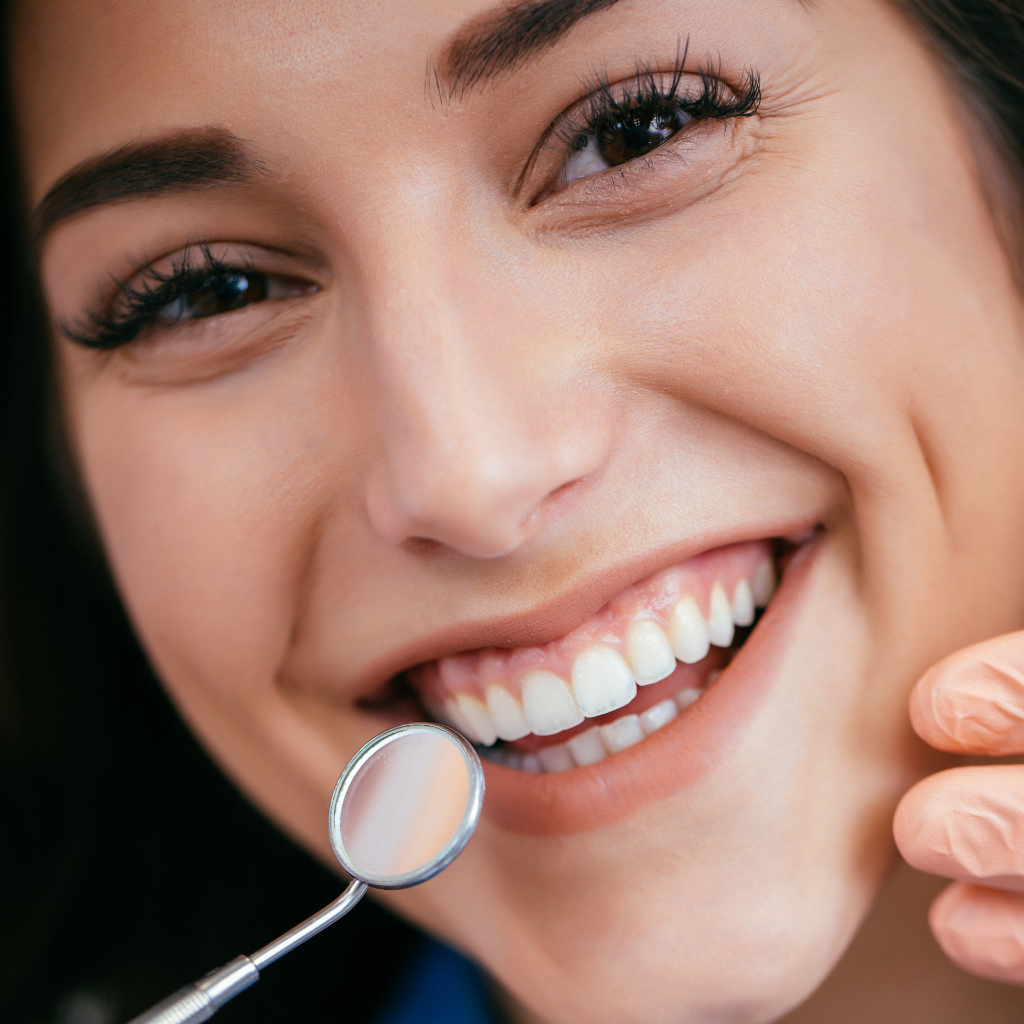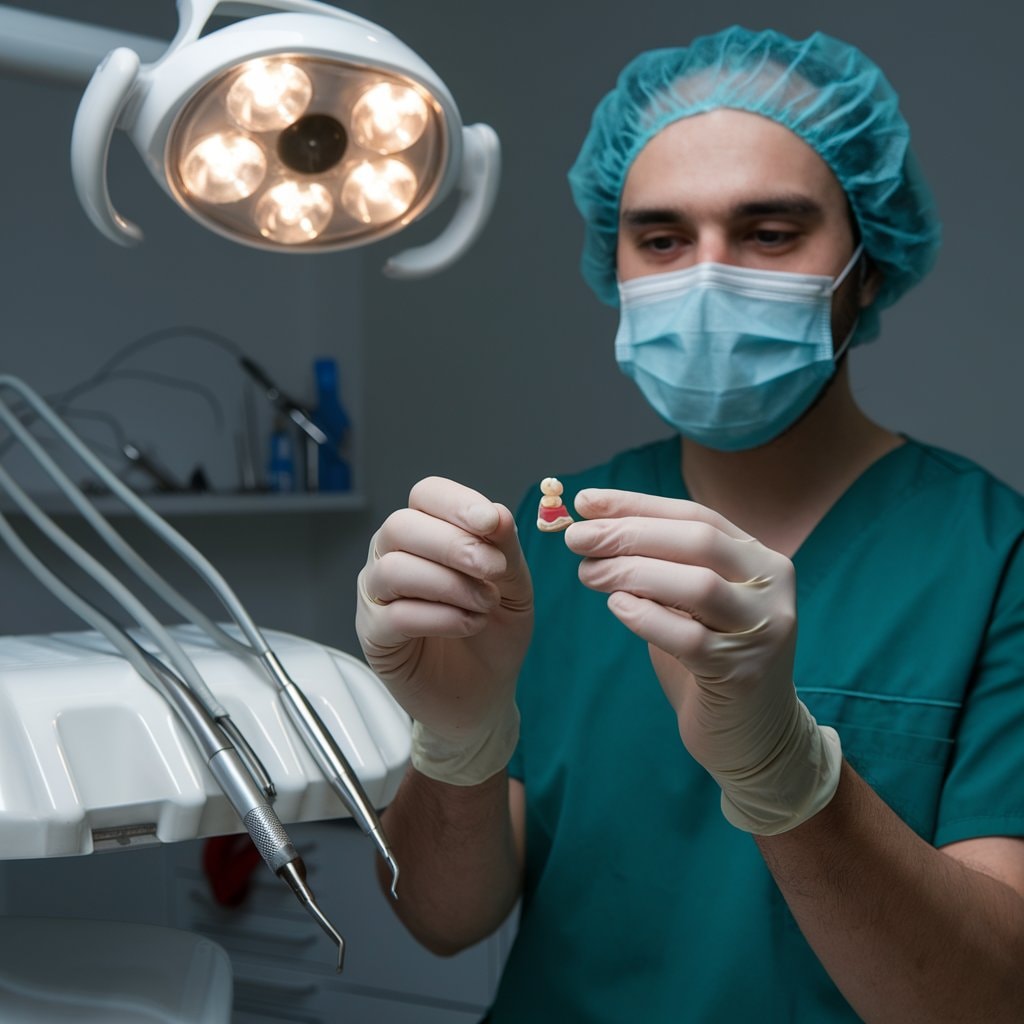Cosmetic dentistry enhances teeth and gums appearance to improve aesthetics and functionality. It includes treatments like teeth whitening, dental crowns, dental veneers, and orthodontics tailored to individual needs to restore and transform smiles. This speciality of dentistry boosts confidence and contributes to overall oral health. By consulting with a skilled cosmetic dentist, one can explore the range of procedures available to achieve a brighter, more aligned smile.
Key Takeaways
- Cosmetic dentistry enhances the look of teeth, gums, and your smile.
- Procedures include teeth whitening, dental veneers, bonding, gum contouring, and implants.
- These treatments improve aesthetic appeal, boost confidence, and enhance oral functionality.
- Benefits range from restoring tooth colour to correcting misalignments and improving oral health.
- A thorough consultation and health assessment ensure safety and suitability before treatment.
What is Cosmetic Dentistry?
Cosmetic dentistry includes various procedures to improve the appearance of crooked teeth, improving both aesthetic appeal and confidence.
These services aim to brighten and align teeth and contribute to overall dental health, emphasizing functional improvements alongside cosmetic enhancements.
While commonly perceived as purely aesthetic, cosmetic dentistry improves oral functionality and patient well-being.
How does cosmetic dentistry enhance the appearance of your teeth?
While many people seek to improve their smile, cosmetic dentistry offers numerous techniques and procedures that enhance the appearance of teeth, focusing specifically on colour, position, shape, size, and alignment.
Here are some key treatments:
- Teeth Whitening: This popular treatment restores the natural colour of the teeth, removing stains from coffee, tea, or tobacco.
- Dental Veneers: Often made from porcelain, veneers cover the front surface of teeth to improve shape and colour.
- Dental Bonding: A resin is applied to correct imperfections such as chips or gaps, seamlessly blending with natural teeth.
- Gum Contouring: This procedure contours the gum line for a more balanced and attractive smile.
These cosmetic dental procedures, including those to whiten teeth, considerably transform the overall appearance of your teeth.
How Can Cosmetic Dentistry Services Improve Your Smile?
Cosmetic dentistry services offer a variety of procedures designed to improve your smile by addressing common cosmetic flaws. These interventions can significantly boost confidence and oral aesthetics, from dental veneers that correct misaligned or discoloured teeth to teeth whitening treatments that restore brilliance.
| Procedure | Benefit |
|---|---|
| Teeth Whitening | Brightens discolored teeth |
| Dental Veneers | Conceals misalignments and discolorations |
| Composite Bonding | Repairs and improves tooth appearance |
| Cosmetic Orthodontics | Corrects misaligned teeth |
Individuals can achieve a more harmonious, vibrant smile through these targeted cosmetic dentistry procedures, effectively addressing discolouration, misalignments, and other dental imperfections.
Is Cosmetic Dentistry Only About Aesthetics
While cosmetic dentistry focuses primarily on improving the appearance of teeth, its benefits extend beyond mere aesthetics.
Here is how:
- Improvement in Dental Health: Cosmetic procedures like crowns protect damaged teeth from further deterioration.
- Enhancement of Oral Functionality: Aligning teeth properly through orthodontics can improve bite and chewing ability.
- Prevention of Future Dental Issues: Some cosmetic treatments can prevent future oral health challenges, integrating closely with general and restorative dentistry.
- Boost in Self-Confidence: Achieving a better smile supports mental well-being and boosts self-esteem.
Thus, the aims of cosmetic dentistry encapsulate a holistic approach to professional oral care, ensuring good oral health while enhancing one’s smile.
Common Types of Cosmetic Dental Procedures
Cosmetic dentistry encompasses various treatments to enhance the aesthetic appeal of one’s smile.
Key procedures include tooth whitening, which restores the natural color of teeth, dental veneers, which provide a new surface to address various imperfections, and dental bonding, which corrects flaws by applying a resin to the tooth’s surface.
Each method involves specific processes tailored to meet individual patient needs and expectations.
How do treatments like tooth whitening work
Understanding the mechanisms behind popular cosmetic dental procedures such as tooth whitening illuminates why they are favoured among patients seeking smile enhancements. Tooth whitening employs peroxide-based whitening gels or strips that react chemically to break down stains on the tooth’s surface, restoring the natural colour of the teeth. This process can be effectively administered in a dental office or through at-home kits prescribed by dental professionals. The key is the controlled application to prevent damage to tooth enamel while achieving desired results.
| Method | Location | Effect on Teeth |
|---|---|---|
| Whitening Gel | Dental Office | Removes deep stains, protects enamel |
| Whitening Strips | Home Use | Targets surface stains, easy application |
| Laser Whitening | Dental Practice | Fast results, professional supervision |
| Custom Trays | Home Use | Even application, customized fit |
| Cleaning | Dental Office | Preliminary stain removal, enamel polishing |
What is the process for getting dental veneers?
Many patients considering cosmetic dental enhancements opt for dental veneers, a popular choice for achieving a flawless smile.
- Consultation: A visit to a cosmetic dentist’s office is essential to discuss dental aesthetics and suitability for veneers.
- Tooth Preparation: Slight reshaping of the tooth’s entire surface to accommodate the veneer, ensuring a perfect fit and blend with natural teeth.
- Impression Making: A mould of the prepared teeth is sent to a dental laboratory, where the custom veneers are crafted.
- Application: The final appointment involves precisely bonding veneers to the teeth, transforming the smile through one of the most sought-after cosmetic dental procedures.
How does dental bonding help improve cosmetic teeth?
Dental bonding is one of the most common cosmetic dentistry procedures that effectively addresses various dental problems. This technique involves applying a tooth-coloured resin material to damaged teeth, which is then hardened with a special light.
This bonding process adheres the material to the tooth structure, allowing for teeth restoration and improvement of cosmetic appearance.
Dental bonding is particularly beneficial for minor cosmetic services such as repairing chipped or cracked teeth, closing gaps between teeth, making teeth look longer or changing their shape.
Its simplicity and cost-effectiveness make it a popular choice among patients seeking quick and noticeable enhancements in their cosmetic teeth without more invasive procedures.

Choosing the Right Cosmetic Dentist
Selecting the appropriate cosmetic dentist is vital for achieving the desired aesthetic outcomes and ensuring patient satisfaction.
Potential patients should evaluate a dentist’s qualifications, experience, and the quality of their previous work to determine alignment with their personal aesthetic goals.
During the initial consultation, it is essential to ask targeted questions about the procedures, expected results, and aftercare to understand the scope and implications of the treatment entirely.
What should you look for in a cosmetic dentist?
When choosing a cosmetic dentist, evaluating their qualifications, experience, and the quality of their previous work is essential.
In the domain of cosmetic dentistry, where the precision of dental work greatly influences outcomes, selecting the right professional is paramount.
Consider the following criteria:
- Credentials and Training: Verify that the dentist has specialized training in cosmetic dental procedures beyond general dentist education.
- Portfolio of Past Work: Review before-and-after photos of actual patients to assess skill level.
- Patient Reviews and Testimonials: Review previous patients’ feedback to gauge satisfaction and experience.
- Consultation Process: Confirm they offer a thorough consultation to discuss cosmetic dentistry costs, services, and your needs.
These steps help confirm you select the best cosmetic dentistry provider for your goals.
How to assess if a dentist’s work aligns with your needs
Having established criteria to evaluate a cosmetic dentist’s qualifications and experience, it is equally important to ascertain that their approach and results align with your aesthetic and health goals.
When exploring cosmetic dentistry options, assess the range of procedures like dental veneers, which are thin yet transformative, and dental implants, commonly used for their durability and natural appearance.
Visit several dental clinics near you to observe the types of cosmetic dentistry they offer. Review portfolios showcasing standard cosmetic dental procedures to verify the dentist’s style matches your expectations.
Additionally, it’s beneficial to understand how many cosmetic dental procedures they typically perform, as the frequent practice might reflect higher proficiency in achieving the best cosmetic outcomes tailored to individual needs.
What should you ask at your initial consultation?
This preparation guarantees clarity about cosmetic dentistry’s procedures, expectations, and outcomes.
- What type of cosmetic procedures do you specialize in? This helps understand the dentist’s expertise in specific treatments like dental bonding, which involves applying a resin.
- Can you show before and after photos of similar cases? Visual evidence can illustrate the potential results of standard procedures.
- What is the cost of cosmetic dentistry treatments I am considering? Knowing the financial commitment upfront aids in planning.
- How does this treatment align with my overall dental health? It’s essential to verify that cosmetic enhancements complement overall dental well-being.

The Benefits of Cosmetic Dentistry
Cosmetic dentistry offers more than just a renewed smile; it is essential in improving overall oral health by addressing issues that might otherwise lead to more serious dental problems.
Beyond aesthetic enhancement, these procedures can restore functionality, allowing patients to enjoy a range of foods and speak more clearly.
In addition, the positive impact on one’s appearance often translates into boosted self-confidence, greatly enhancing personal and professional interactions.
How can cosmetic dentistry improve oral health?
Beyond enhancing aesthetics, cosmetic dentistry plays a significant role in maintaining and promoting better oral health. Here are key ways it achieves this:
- Prevention of Tooth Decay: Procedures like bonding and veneers protect vulnerable areas from decay.
- Improvement in Oral Hygiene: Straighter teeth achieved through orthodontic treatment like traditional braces are easier to clean, reducing the risk of gum disease.
- Replacement of Lost Teeth: Implant dentistry offers durable solutions like artificial teeth, preventing jawbone deterioration and misalignment of surrounding teeth.
- Alleviation of Dental Issues: Corrective treatments rectify bite issues and reduce wear on teeth, leading to a healthier mouth overall.
These interventions collectively help sustain oral health and prevent future dental problems.
What are the aesthetic and functional benefits of cosmetic dentistry?
Cosmetic dentistry, which enhances appearance, also delivers considerable functional advantages. Standard cosmetic procedures beautify the smile and improve bite alignment and chewing efficiency.
Many cosmetic treatments, such as dental veneers and crowns, provide cosmetic enhancements while protecting damaged teeth from further decay.
Additionally, cosmetic dentistry can greatly improve oral functionality by replacing missing teeth with implants or bridges, which aid in maintaining facial structure and preventing bone loss.
Minor cosmetic adjustments, like reshaping uneven teeth, can make a significant difference in how teeth meet, distributing bite forces evenly and reducing stress on the jaw.
Consequently, aesthetic dentistry encompasses both visual improvement and essential dental health benefits.
Can cosmetic dentistry boost confidence?
Enhanced self-esteem often accompanies the improved smiles achieved through cosmetic dentistry. Individuals with misshapen, crooked, or crowded teeth usually find renewed confidence after undergoing popular cosmetic dental procedures.
- Alignment and Spacing: Metal braces or clear aligners correct crooked or crowded teeth, enhancing facial symmetry.
- Reshaping and Contouring: Techniques to reshape excess gum tissue or misshapen teeth can dramatically improve the appearance of the front teeth.
- Colour Correction: Whitening treatments remove discolouration, offering a brighter, more attractive smile.
- Implants and Veneers: A single dental implant or veneer can replace missing or damaged teeth, restoring a complete and healthy smile.
Such transformations often lead to significant personal and professional advancements.
Understanding the Risks and Considerations
While cosmetic dentistry often promises enhanced aesthetics, it is vital for patients to be aware of the associated risks and safety profiles of these procedures.
Understanding potential complications and how they might be mitigated is essential for anyone considering cosmetic dental treatments.
Preparation for a cosmetic procedure involves thorough consultations with qualified professionals to guarantee patient safety and satisfaction.
Are cosmetic dental procedures safe?
While cosmetic dentistry encompasses treatments designed to enhance one’s smile, safety is always a primary concern.
Here are key considerations regarding safety:
- Regulation and Standards: Cosmetic dentistry procedures are regulated to meet specific safety standards.
- Advanced Materials: Many treatments use materials created in a dental laboratory, known for their durability and compatibility.
- Professional Expertise: Procedures are typically performed by qualified dentists trained to handle different types of cosmetic dental needs safely.
- Patient Health Screening: Dentists usually conduct thorough health assessments to determine the suitability and safety of procedures for each individual, considering factors like dental history and current health.
What risks are involved in cosmetic dentistry?
Despite the advancements and regulations in cosmetic dentistry, potential risks are inherent to any medical procedure.
The Dental Association highlights that procedures involving one or more teeth can lead to complications such as severe tooth decay or loss if not properly managed. Treatments like indirect fillings can inadvertently affect the tooth root, potentially leading to sensitivity or further damage.
When multiple teeth are involved, the risk escalates, impacting surrounding gum tissue and other oral structures. Additionally, interventions for missing teeth, such as implants, carry risks like infection or misalignment.
Consequently, understanding these risks is essential, as dentistry plays a significant role in aesthetics and overall oral health and function.
How to prepare for a cosmetic procedure
Understanding the risks associated with cosmetic dentistry is a foundational step in preparing for any procedure. It is essential for patients to be well-informed to guarantee they make educated decisions about their dental care.
Here are key preparations one should consider:
- Consultation: Consult thoroughly with a qualified cosmetic dentist to discuss your goals and expectations.
- Health Evaluation: Undergo a complete dental and medical health assessment to detect underlying issues that could impact the procedure.
- Cost Assessment: Review the detailed cost breakdown of the procedure and consider financial planning or insurance options.
- Recovery Planning: Understand the recovery process and time required, and arrange for post-procedure care and assistance if necessary.
Conclusion
In summary, cosmetic dentistry offers a compelling avenue for enhancing one’s smile through various sophisticated procedures. Patients seeking aesthetic improvements should carefully select qualified cosmetic dentists who prioritize safety, efficacy, and personalized care. While the benefits of cosmetic dentistry can be transformative, patients need to understand the associated risks and make informed decisions fully. Proper consultation and planning can ultimately lead to successful outcomes that significantly improve dental aesthetics and boost self-confidence.


